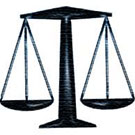The Line Between Radical Revolution and Riot
The Line Between Radical Revolution and Riot By Chanel Mitchell
We have all heard the saying by
Rodney King, “Can’t we all just get along?” It was Wednesday, April 29th,
1992. The verdict was in and the community was enraged. Call out the LAPD, the
National Guard and the US Marines. The city of Los Angeles was literally ON
FIRE. It was the disappointing
acquittals of four LAPD officers in the Rodney King trial, the acquittal of
Korean Liquor Store owner Soon Ja Du who murdered 15 year old Latasha Harlins
and the continuous issues of police brutality, racism and social inequalities
that sparked the 1992 LA Riots.
I was only 1 year old when the
verdict was read. My family tells me of the community’s gatherings at local
Barber shops, Beauty Salons and anywhere where there was a radio or television
set to hear the fate of the four police officers who brutally beat African
American male, Rodney King. The world witnessed the beating on videotape and
was sure that the LAPD officers would be punished for their crimes.
At 3:15pm that day, the verdict was
read and to shock the world, the four officers were acquitted of assault and
use of excessive force. People were frustrated, angry, disappointed and
completely fed up.
Just a few hours after the verdict, around 6:45pm my
grandparents, who resided in South Central Los Angeles, recall the gathering of
people on the streets of Florence and Normandie as rallies rapidly grew into
angry mobs and rioting began. It was that moment where a white male truck
driver by the name of Reginald Denny pulled into that intersection of Florence
and Normandie , was forced from his truck and beaten nearly to death my
rioters.
As seen live on television, rioting
began with the attacking of cars and innocent people, looting then arson. My
Grandpa tells me that all you could hear was yelling, screaming, sirens and
full on commotion. Your lungs were contaminated the 3,600 fires that were set.
Businesses were burning and retail stores were trashed by looters who felt that
their doings were justified. The scene was described like a warzone.Many people, my
grandfather included, felt that their only options were to hide in their homes or
join the so called “revolution.” Some
family members admit participating in looting from grocery stores recalling
taking meat from the local meat market to feed the family. Although they were
doing wrong, the felt that these extreme actions were the only way that issues
of police brutality, racism and social inequalities could be confronted.
Over the next 6 days, rioting
continues with looting, arson and murder. A noted 55 people were killed, 10 of
whom were killed by the police and thousands were injured. Over the course of
rioting 1,000 buildings were destroyed and there was an estimated $1 Billion
dollars in damages. The Los Angeles community was destroyed. In the end, as an effort to end the violent
terror, Governor Pete Wilson requested federal assistance. About 10,000 members
of the National Guard, law enforcement officers and military officers patrolled
the streets until rioting was under control.
To prevent such things like the
Rodney King incident or rioting of the community, the LAPD and their leader
Bernard Parks initiated methods of change. They increased their number of
minority officers and analyzed the use of obsessive force upon victims.
Reporting of police brutality decreased and the community was at ease. Although changes have been made, corruption
within the LAPD is still confronted. Most recently, we have witnessed the
manhunt of Christopher Dorner, a former LAPD officer who began a killing spree
as a result of these claimed corruptions. What we learn from this is that anger
of injustice sparks controversial revolutions and when people are fed up they
act upon those emotions and sometimes they aren’t the most ethical decisions.
What is true is that violent actions do not cause change but ultimately makes
the situation worse.
The question that I leave you with is
where is the line between radical revolution and riot?
Labels: black, Chanel Mitchell, changes, la riot, LAPD, los angeles, Los Angeles Police Department, Rodney King



0 Comments:
Post a Comment
Subscribe to Post Comments [Atom]
<< Home